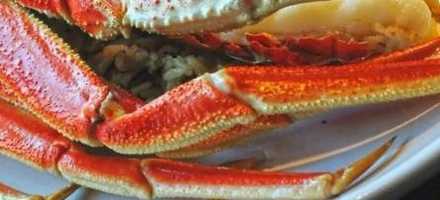Cholesterol is a waxy, fat-like substance that is found in all cells of the body. It plays important roles in hormone production, vitamin D synthesis, and bile production. However, having high cholesterol levels in the blood is associated with an increased risk of heart disease. For this reason, many people are concerned about consuming foods high in cholesterol. This article provides a detailed look at whether crab legs are high in cholesterol.
What is Cholesterol?
Cholesterol is often divided into two main types
-
LDL cholesterol: Also known as “bad” cholesterol, high levels of LDL cholesterol can lead to a buildup of cholesterol in your arteries.
-
HDL cholesterol Often called “good” cholesterol HDL carries cholesterol from other parts of your body back to your liver where it can be removed. Higher levels of HDL cholesterol are associated with a lower risk of heart disease.
In addition to HDL and LDL cholesterol, eating certain foods can also increase your blood levels of cholesterol. Dietary cholesterol is found only in animal foods, with eggs and shellfish being the most concentrated sources.
Cholesterol in Crab Legs
Crab legs are one type of shellfish that contains notable amounts of cholesterol. An 85-gram serving of Alaskan king crab legs contains:
- 60 mg cholesterol
- 34 grams protein
- 1 gram carbohydrate
- 0 grams fiber
This means that Alaskan king crab legs provide 70 mg cholesterol per 100 grams. Compared to other shellfish like shrimp and lobster, crab legs are lower in cholesterol but still a significant source.
Other varieties like Dungeness crab have similar cholesterol levels. A 100-gram serving provides about 65–70 mg of cholesterol.
Are Crab Legs Considered High in Cholesterol?
The American Heart Association recommends consuming less than 300 mg of cholesterol per day if you have high cholesterol or heart disease risk factors. For healthy individuals, less than 200 mg per day is recommended.
Given that a single 100-gram serving of crab legs provides 60–70 mg cholesterol, the legs are relatively high in cholesterol compared to other protein foods. For example, a 100-gram chicken breast only contains about 70–90 mg.
However, consuming crab legs as part of an overall healthy diet is unlikely to significantly raise blood cholesterol levels in most people. Having crab legs occasionally can easily fit into heart-healthy dietary patterns like the Mediterranean diet.
Those who already have high LDL cholesterol or heart disease may want to limit crab legs to no more than one serving per week. For these individuals, the cholesterol in crab legs is more likely to impact blood cholesterol levels.
Ways to Enjoy Crab Legs while Limiting Cholesterol
Here are some tips for fitting crab legs into a heart-healthy diet:
-
Stick to a 3–4 ounce portion. This provides plenty of protein while limiting cholesterol.
-
Choose crab legs over dishes like crab cakes or stuffed crab which add additional cholesterol from eggs and cheese.
-
Avoid adding butter on top of crab legs, which significantly increases cholesterol and saturated fat intake.
-
Substitute crab legs for higher cholesterol shellfish like shrimp or lobster occasionally.
-
Balance crab legs with heart-healthy sides like vegetables or whole grains.
-
Limit other high cholesterol foods on days when you eat crab legs.
The Bottom Line
Crab legs are relatively high in cholesterol compared to other protein sources. However, eating them in moderation as part of an overall healthy diet is unlikely to negatively impact cholesterol levels for most people. Those with high cholesterol should limit intake to no more than one serving per week. Selecting lean preparations, watching portion sizes, and balancing crab legs with heart-healthy foods can help reduce potential negative effects on cholesterol levels.

Nutrition Facts of Snow Crab Legs
One of the primary reasons why people love snow crab legs is their high protein content. A 3-ounce serving of snow crab legs contains approximately 15 grams of protein, making them an excellent source of this essential nutrient. Additionally, snow crab legs are relatively low in calories, with a 3-ounce serving containing just 70 calories. This makes them an ideal choice for those looking to maintain a healthy weight or lose a few pounds.
Snow crab legs are also rich in vitamins and minerals, including vitamin B12, phosphorus, and selenium. Vitamin B12 is essential for a healthy nervous system, while phosphorus plays a vital role in bone health. Selenium is an antioxidant that helps protect the body from damage caused by free radicals.
Snow Crab Legs Nutrition
Snow crab legs are a delicacy enjoyed by seafood lovers around the world. Not only are they delicious, but they also offer a range of nutritional benefits. In this post, well explore the snow crab legs nutrition facts you need to know, including their protein and calorie content, as well as tips for preparing and enjoying them.
Pros and Cons of Crab Meat
FAQ
Are crab legs bad for cholesterol?
What are the worst foods for high cholesterol?
Foods high in saturated and trans fats are generally the worst for high cholesterol, as they can raise LDL (“bad”) cholesterol levels. This includes fatty cuts of red meat, processed meats, full-fat dairy, and fried foods.
Which seafood is high in cholesterol?
While some seafood is naturally high in cholesterol, it’s generally a better choice for a heart-healthy diet than many other protein sources. Shellfish like shrimp, lobster, and crab, and some fish like squid, are relatively high in cholesterol, but also low in saturated fat.
Are crab legs healthy?
Yes, crab legs are generally considered a healthy food choice. They are a good source of lean protein, omega-3 fatty acids, and various vitamins and minerals, while also being relatively low in calories and saturated fat.
